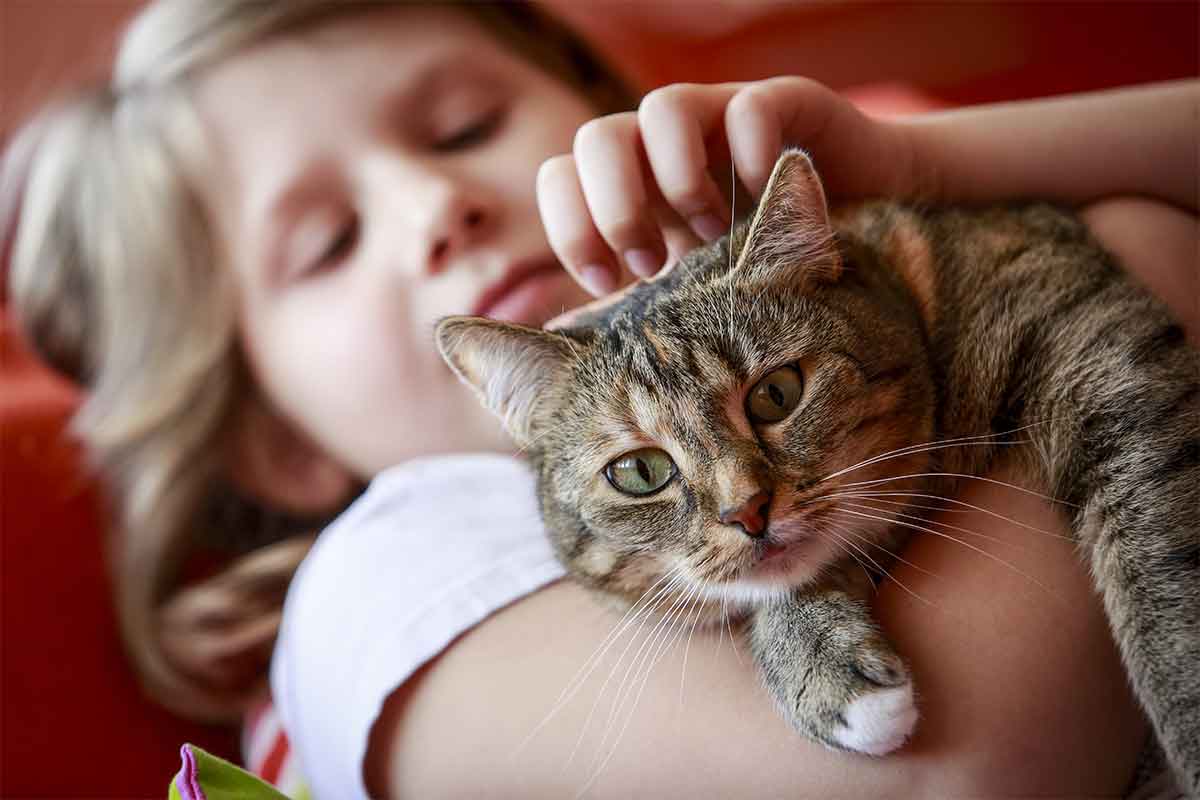Kids and cats go together like mac ’n’ cheese. Cats offer warm companionship for children and the life-long value of compassion for sentient, living beings. In children, cats have a built-in playmate and attention-giver. What can be a special relationship takes work to build, though, to ensure that cats and children enjoy a stress-free experience when getting to know each other.
The foundation for the relationship starts before the cat comes home. With thoughtful planning, you can ensure a happy transition without fear or anxiety for the cat or kitten, the kids, and yourself.
Think Ahead
After you’ve made the decision to add a feline family member, take some time beforehand to learn about proper cat care. Involve your children from the beginning by going on field trips to your local veterinarian, pet supply stores, and libraries or bookstores to read age-appropriate cat-related books.
As you kitten- or cat-proof your home, teach your children to be “cat aware.” Have them practice looking before opening doors and then to carefully close doors behind them. Children should also learn that leaving their toys with strings, small parts, or sharp edges on the floor could be dangerous to cats and kittens. Bonus: this is a good way to help ensure that toys are picked up and put away.
All children should be involved with naming the new cat, shopping for toys for playtime, and going on vet visits to learn about feline health care.
Introductions
Bring your new cat or kitten home on a calm, quiet day, when you know you can give your full attention to the introduction. For example, don’t plan to bring your new cat home on the day you have a bouncy-house birthday party planned. Ahead of the arrival, let the kids help set up the cat’s designated room with the litter box, bed, food and water, and toys. Explain that being in a new home is stressful for the cat—like the first day of a new school is for kids—and that quiet time is necessary to help create a calm environment.
Once you’re all in the room together, set the carrier on the floor and slowly open the door to let the cat venture out. Welcome to cat time! Be patient, and never reach in to grab the cat. You may get a swift paw swipe if kitty is scared. This sets up a potential fearful relationship for both children and cat. You are your children’s role model, and they’ll follow your lead.
- Sit quietly and talk to the cat in a soft, soothing voice while allowing your new cat to explore. It’s important that children learn to let the cat approach them first.
- Hold out one finger and let the cat sniff it. If kitty rubs against your finger, bravo! If the cat backs away or hisses, he’s unsure of the situation. Never force interaction; this usually ends badly for everyone.
- If kitty displays an overt interest in more physical contact, demonstrate how to gently pet the cat using the open palm of your hand.
- With very young children, start slowly and gradually build up the time with the cat. Never leave young children alone with the cat or kitten.
- At any time during the introduction if the children get noisy or too excited, stop the introduction. Likewise, if the cat becomes restless, overstimulated, or tired, stop. This is a good time to teach children that cats and especially growing kittens need undisturbed rest.
Teach children not to chase or corner the cat, pull the tail or ears, or interrupt the cat while she’s eating or using the litter box. These behaviors are stressful for the cat and teach her to be fearful of children. If you have very young children, make sure the cat has a kid-free retreat.
Who Does Cat Care?
People often consider getting a cat to teach children responsibility and the associated tasks of feeding, litter box cleaning, and grooming, but the true responsibility for caregiving falls on the parents. Supervise young children yourself if they perform such duties. Give older children age-appropriate duties, but be sure to rotate tasks between children so one child isn’t always on litter box duty. Monitor care daily so the cat never misses a meal, always has fresh water, gets a couple of minutes of playtime from everyone, and doesn’t have to contend with a dirty litter box.
The deep bond children develop with their cats comes with many teachable moments that include responsibility, compassion, and respect for other beings. Parental guidance, planning ahead, and continued education helps make the pet experience positive for children and cats—for life.
This article was reviewed/edited by board-certified veterinary behaviorist Dr. Kenneth Martin and/or veterinary technician specialist in behavior Debbie Martin, LVT.








